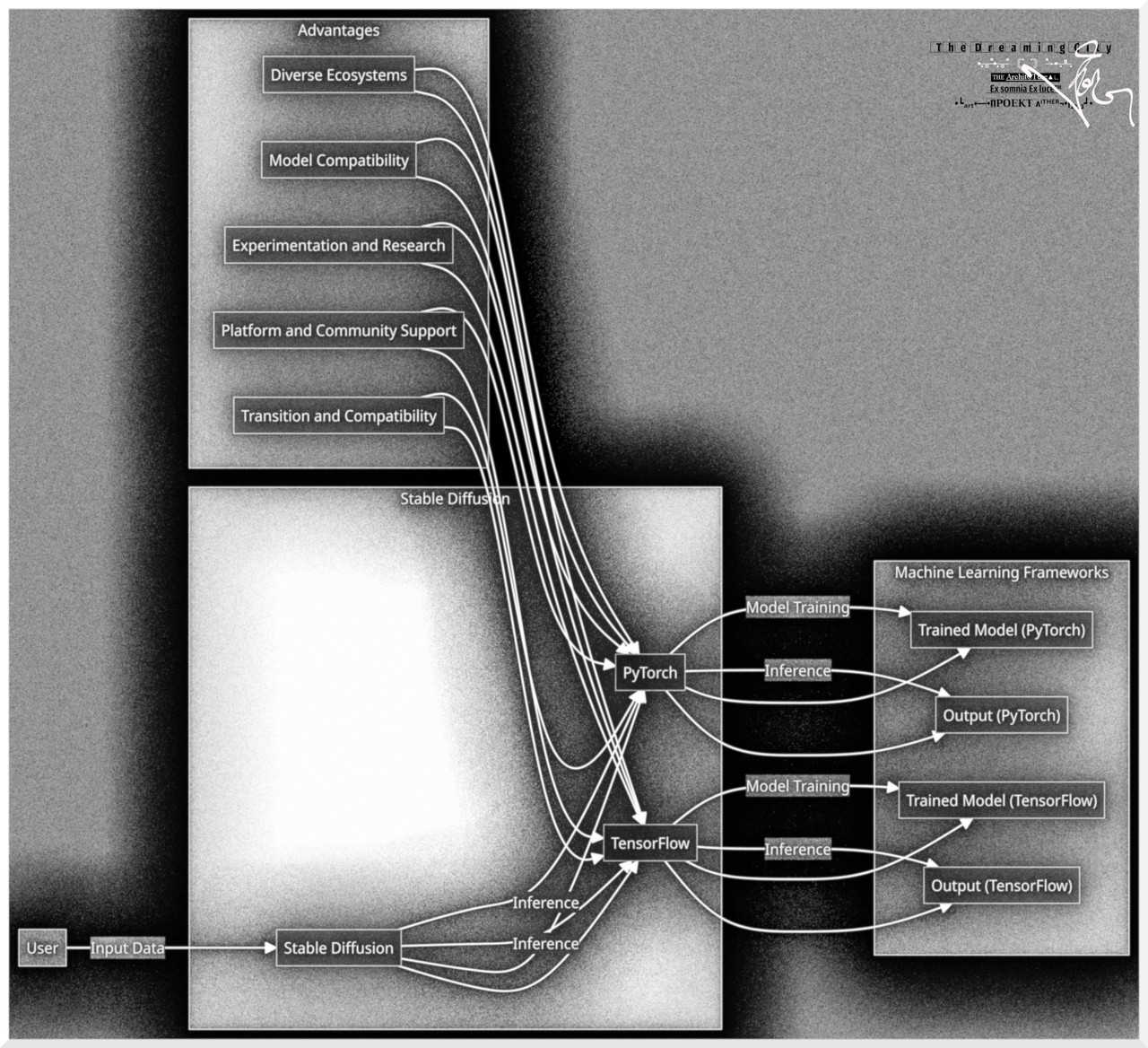HOME | DD
 johnnyvirtual — Usefulness
johnnyvirtual — Usefulness

Published: 2023-07-17 21:04:44 +0000 UTC; Views: 170; Favourites: 1; Downloads: 0
Redirect to original
Description
The advantages highlighted in the diagram include:Diverse Ecosystems: Both TensorFlow and PyTorch have their own ecosystems, libraries, and tools. This advantage allows users to leverage the strengths of each ecosystem for different purposes and requirements.
Model Compatibility: By using both frameworks, users gain access to a broader range of pre-trained models and architectures. This advantage facilitates leveraging existing work and saves time in model development.
Experimentation and Research: PyTorch's flexibility, dynamic graph, and ease of use make it suitable for rapid experimentation and research. TensorFlow's static computational graph and production capabilities complement this by enabling scaling and deploying models in production environments.
Platform and Community Support: TensorFlow and PyTorch have substantial communities and support resources. This advantage ensures that users have access to a wider range of community knowledge and resources for troubleshooting and assistance.
Transition and Compatibility: Using both frameworks can facilitate the transition between TensorFlow and PyTorch, especially when migrating existing projects or maintaining compatibility between codebases.
Using both TensorFlow and PyTorch together can offer several advantages in certain scenarios:
Diverse Ecosystems: TensorFlow and PyTorch have evolved with their own respective ecosystems, libraries, and tools. By using both frameworks, you can leverage the strengths of each ecosystem. TensorFlow has a vast ecosystem with extensive support for deployment, productionization, and serving models at scale. PyTorch, on the other hand, is known for its research-friendly environment, ease of use, and dynamic computational graph.
Model Compatibility: Some pre-trained models or model architectures may be readily available in one framework but not the other. Using both frameworks allows you to access a broader range of pre-trained models and architectures, enabling you to leverage existing work and save time.
Experimentation and Research: Researchers often prefer PyTorch due to its flexibility, dynamic graph, and ease of prototyping. PyTorch's interactive nature makes it suitable for rapid experimentation and iterating on new ideas. TensorFlow, with its static computational graph and strong production capabilities, is well-suited for scaling and deploying models in production environments.
Platform and Community Support: TensorFlow and PyTorch have substantial communities and support resources. If you encounter challenges or need assistance, having expertise in both frameworks can give you access to a wider range of community knowledge and resources.
Transition and Compatibility: In some cases, using both frameworks can be beneficial during the transition from one framework to another. If you are migrating an existing TensorFlow project to PyTorch or vice versa, having familiarity with both frameworks can facilitate the transition process and help in maintaining compatibility between the codebases.



















